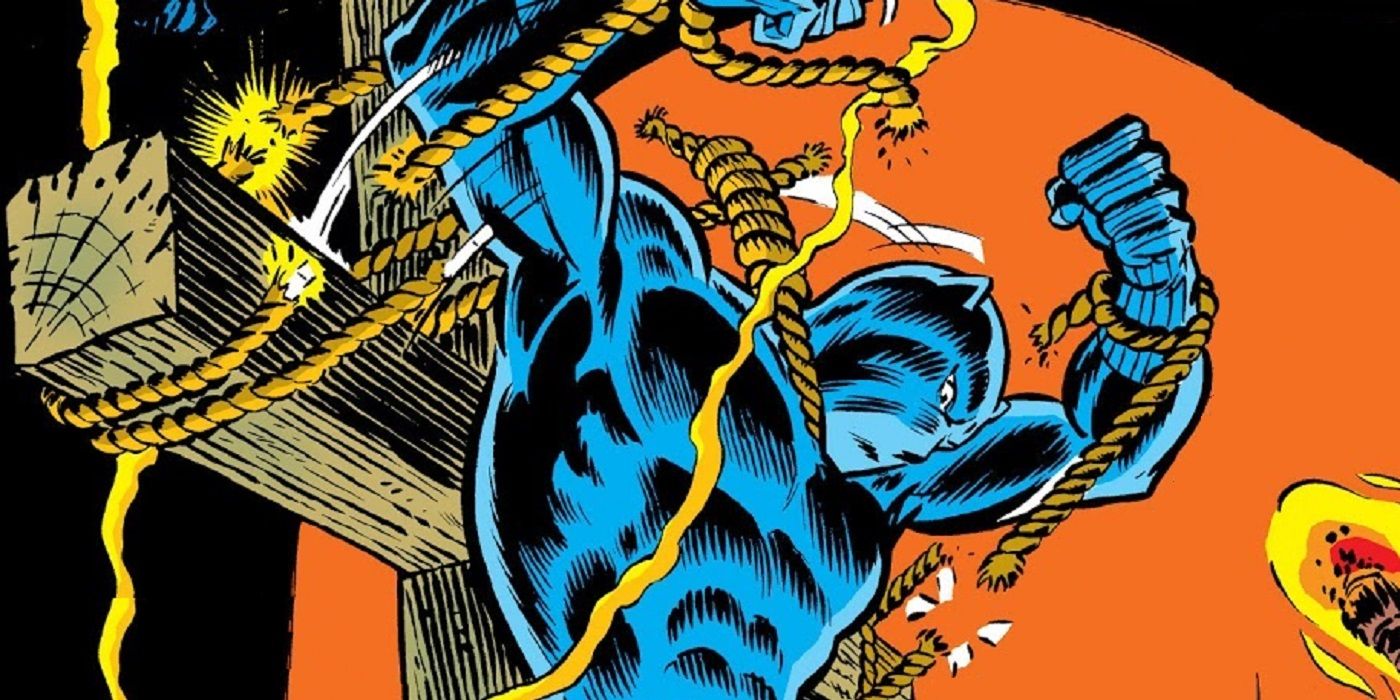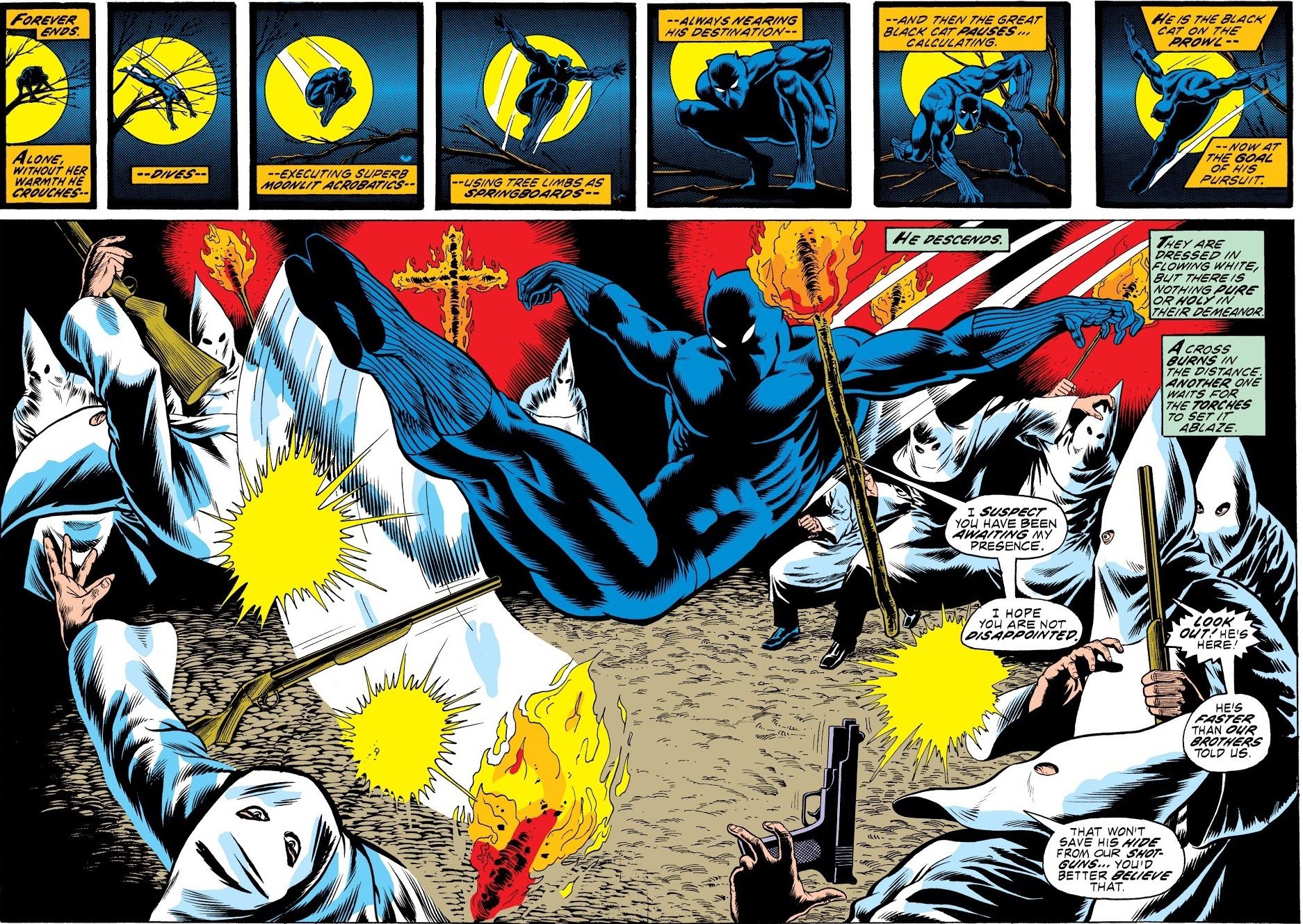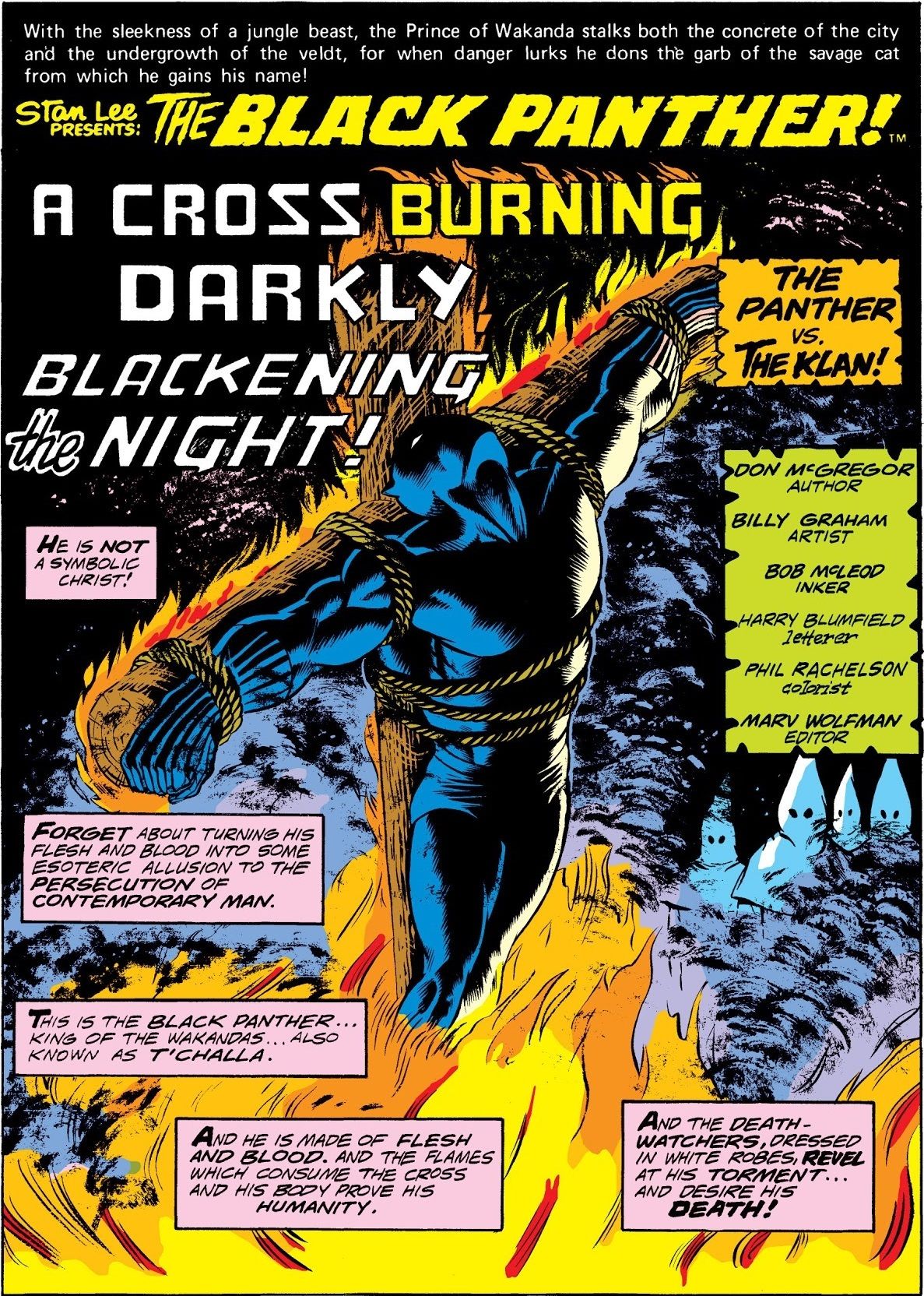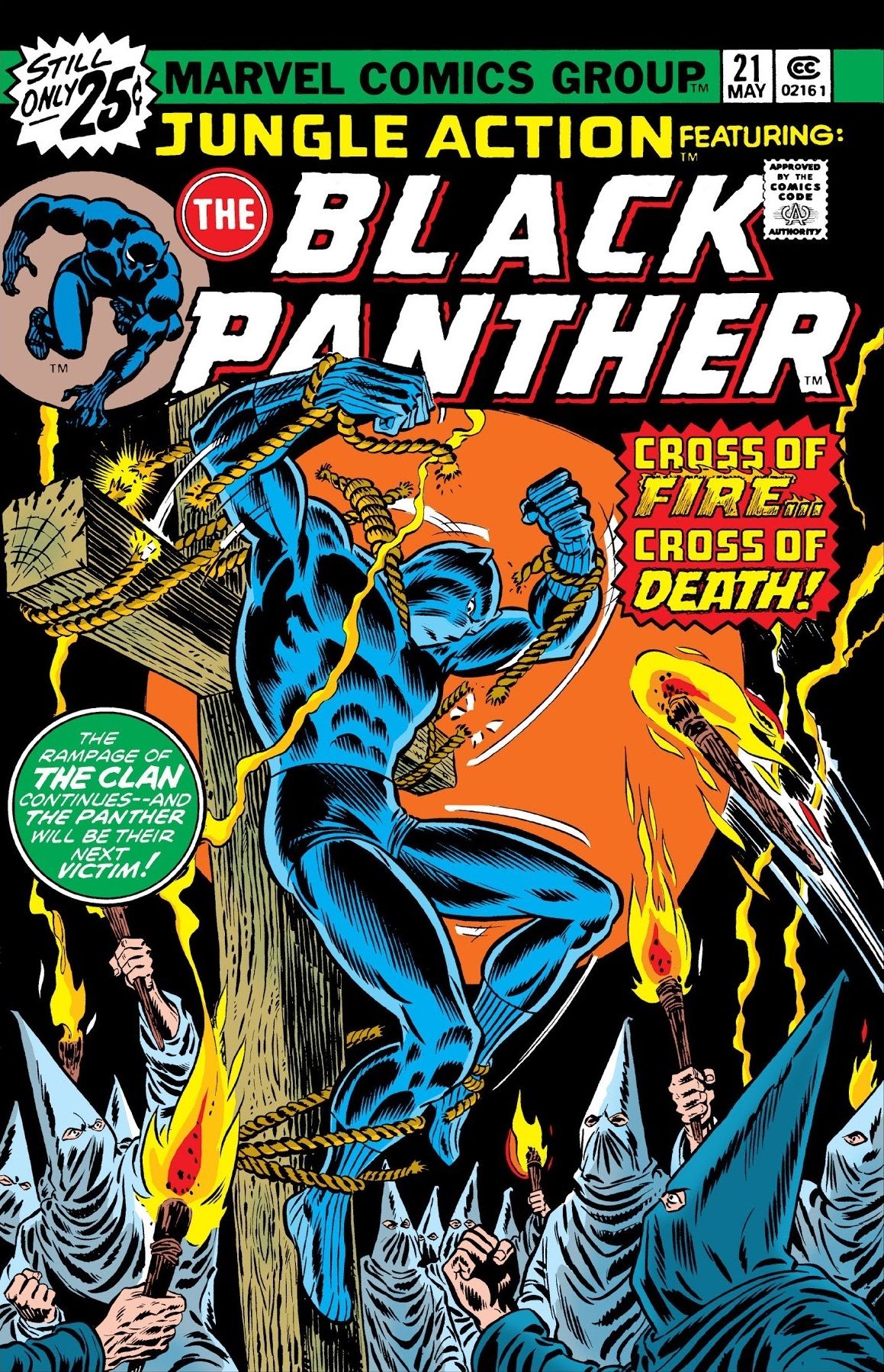In the latest Comic Book Legends Revealed, find out whether the Comics Code really forced Marvel to change a Black Panther vs. the Klan cover
Welcome to Comic Book Legends Revealed! This is the eight hundred and sixty-fourth installment where we examine three comic book legends and determine whether they are true or false. As usual, there will be three posts, one for each of the three legends.
NOTE: If my Twitter page hits 5,000 followers, I'll do a bonus edition of Comic Book Legends Revealed that week. Great deal, right? So go follow my Twitter page, Brian_Cronin!
COMIC LEGEND:
The Comics Code forced Rich Buckler to re-draw one of his Black Panther versus the Klan covers.
STATUS:
Basically True
Something that I always find interesting about the Comics Code Authority is how history treats it as a bit too intertwined with Fredric Wertham's Seduction of the Innocent. The Comics Code and Seduction of the Innocent were two distinct things. Seduction of the Innocent had a lot of themes, and it just got the public's attention enough that the Senate got involved, and the comic book companies reacted with the introduction of the Comics Code. In other words, a lot of the stuff that Wertham was complaining about could not be addressed by the Comics Code, because the comic book companies had been BASICALLY using their own form of the Comics Code for YEARS by the time that the Comics Code came about, and Wertham hated all of those things still. As Stan Lee once pointed out, while he hated Wertham, the Comics Code itself wasn't much of a burden for Marvel (then Atlas) because the comics were already being held to the same basic standards of the Comics Code ANYways. The Comics Code was much more of a "screw you" to EC Comics than it was to either DC or Marvel/Atlas, as EC was almost sort of the bone that the other comic book companies threw to the masses to say, "See, we did SOMEthing!"
I bring this up to note that since the comic book companies really had control of the Comics Code in a lot of ways, there were some really dodgy aspects of the Comics Code in terms of the vagueness of it all.
WHAT WERE THE VAGUE ASPECTS OF THE COMICS CODE?
f you go through the Code, there are lots and lots of restrictions, and some of them go into great detail.
Here are some of them:
Inclusion of stories dealing with evil shall be used or shall be published only where the intent is to illustrate a moral issue and in no case shall evil be presented alluringly, nor so as to injure the sensibilities of the reader.
Scenes dealing with, or instruments associated with walking dead, torture, vampires and vampirism, ghouls, cannibalism, and werewolfism are prohibited.
Profanity, obscenity, smut, vulgarity, or words or symbols which have acquired undesirable meanings are forbidden.
Nudity in any form is prohibited, as is indecent or undue exposure.
Suggestive and salacious illustration or suggestive posture is unacceptable.
Females shall be drawn realistically without exaggeration of any physical qualities.
Illicit sex relations are neither to be hinted at nor portrayed. Rape scenes, as well as sexual abnormalities, are unacceptable.
The Code had plenty of very specific restrictions, and yet, there was this whole other level to the Code, as well.
Also in the Code is the following:
All elements or techniques not specifically mentioned herein, but which are contrary to the spirit and intent of the code, and are considered violations of good taste or decency, shall be prohibited.
That term did a LOT of work over the years. And yes, as I say that the comic book companies were ostensibly in control of the Code, it is fair to also note that the Code had ENOUGH power on its own that the various companies just mostly let it alone, because they were all benefiting from it, PR-wise, so why mess with it? In the near future, I'll show a bizarre instance of where one of the vague problems of the Code came into play.
Here, though, let's go to the mid-1970s and how the "Code" forced a Black Panther cover to be edited for rather specious reasons.
WHY WAS A RICH BUCKLER BLACK PANTHER COVER EDITED?
As you likely have heard by now, Don McGregor and Billy Graham's second major storyline in their run on Black Panther in the pages of Jungle Action saw Black Panther fight against the actual Ku Klux Klan...
This was obviously a sensitive topic for Marvel, and so Rich Buckler, who was the original artist on the Black Panther run and continued as the cover artist for the book.
So for Jungle Action #21, Buckler drew one cover, and he was told he needed to change it. He explained on Facebook back in 2015, "I remember when I drew this cover. John Romita got a call from the powers-that-be. Seems that it caused a commotion at the editorial offices at the time it was conceived. It was revised, but I penciled the changes--actually a total revamp. So still all of my drawing, with Romita inking. And the original version was much more powerful. I also suspect that the comics code really had nothing to do with the decision making. They were pretty much asleep at the wheel and consider this: This was approximately the same time period when Deathlok came about--and he was a re-animated corpse!"
As Buckler notes, often, the comic book companies would just use the Code to make changes they felt like making. Sometimes they'd be right, and that the Code WOULD have objected, but sometimes they were wrong. I honestly don't know the answer here, but all I know is that as Buckler notes, the original cover was basically Billy Graham's splash page for the issue...
and then this was the edited cover...
Still a great cover, though!
Thanks to the late, great Rich Buckler and the great Don McGregor for the information on Facebook.
SOME OTHER ENTERTAINMENT LEGENDS!
Check out some entertainment legends from Legends Revealed:
1. Was Jonathan Rollins on L.A. Law Based on Barack Obama?
2. Was There a Scene Featuring Slimer Cut From the End of Ghostbusters II?
3. Was Moby-Dick’s First Edition Printed Without the Ending?
4. Was The Rolling Stones’ ‘Wild Horses’ Almost Accidentally Erased?
PART TWO SOON!
Check back soon for part 2 of this installment's legends!
Feel free to send suggestions for future comic legends to me at either cronb01@aol.com or brianc@cbr.com




